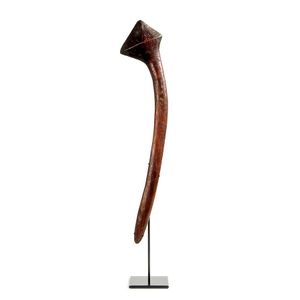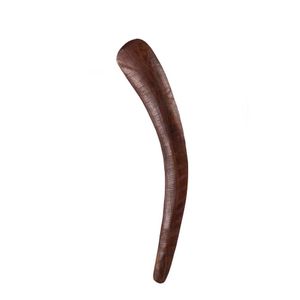Rare North Queensland ceremonial boomerang-club
You must be a subscriber, and be logged in to view price and dealer details.
Subscribe Now to view actual auction price for this item
When you subscribe, you have the option of setting the currency in which to display prices to $Au, $US, $NZ or Stg.
- Circa - A Latin term meaning 'about', often used in the antique trade to give an approximate date for the piece, usually considered to be five years on either side of the circa year. Thus, circa 1900 means the piece was made about 1900, probably between 1895 and 1905. The expression is sometimes abbreviated to c.1900.
- Incised - A record of a name, date or inscription, or a decoration scratched into a surface, usually of a glass or ceramic item with a blunt instrument to make a coarse indentation. Compare with engraving where the surface is cut with a sharp instrument such as a metal needle or rotating tool to achieve a fine indentation.
- Important - Important is a word used in the antique trade to indicate an object should be ranked above other similar objects, and is therefore more valuable.
The object could be considered important because it is by a famous designer or maker, has been shown at a major exhibition, is of exquisite workmanship, is rare or is a "one-off", was made for an important patron, and so on.
Even further up the pecking order are objects that are described in catalogue descriptions as highly important or extraordinarily important.
This item has been included into following indexes:
- Australian Aboriginal artefacts
Visually similar items

A modernist bronze of a Madonna and Child. By L. Mimovich. 24 cm

A boomerang-club (lil-lil), New South Wales (nineteenth century), carved hardwood, 63 cm high. Provenance: Private Collection, Melbourne

A rare boomerang club, South East Australia (nineteenth century), carved hardwood, 63.5 cm high. Provenance: Private Collection, Melbourne

A rare fishing boomerang, possibly South Australia, carved hardwood, 59.1 cm high. For two related examples see Philip Jones, boomerang;, Behind an Australian Icon, Ten speed Press, California, 1997, pp. 52-53, where he describes the illustrated examples a
